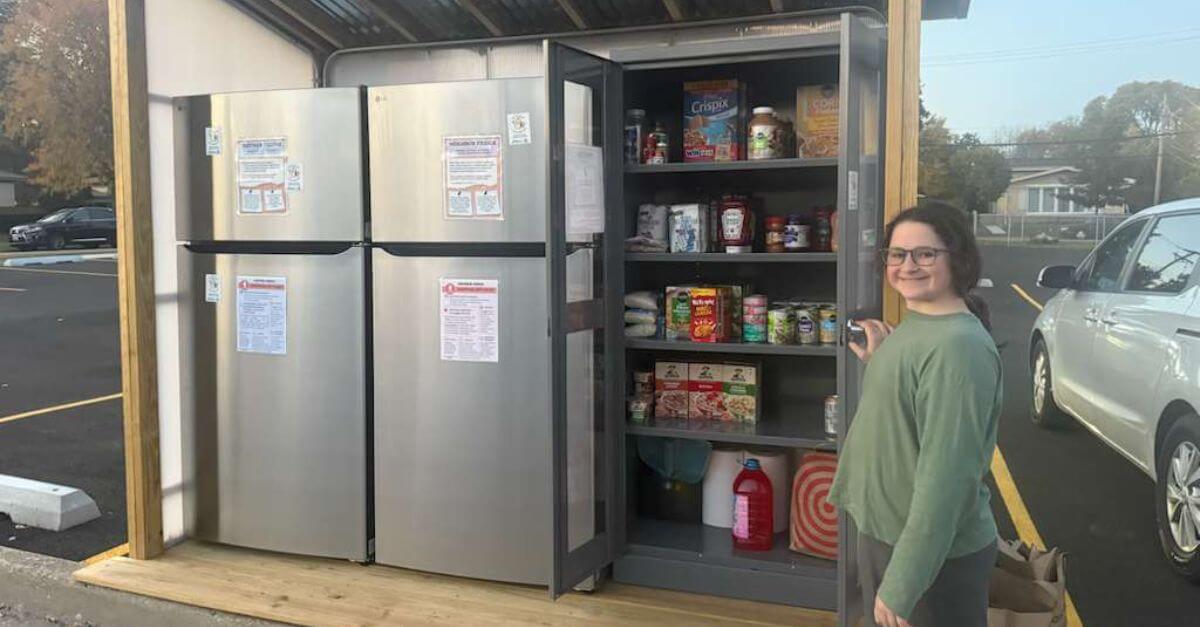Jewish Camps Torched In California Wildfires Find A Sturdy Savior In Federation

The Woolsey Fire, seen from Agoura Hills on November 9. Image by Getty Images
On the morning of November 9, Rabbi Bill Kaplan’s phone rang around 4 A.M. The wildfire that had begun up in the hills a day earlier was spreading. Kaplan got in his car and drove up to the camp he runs in the mountains outside Malibu. There were decisions to be made.
“We could just see a glow from where we were, but we really had no idea the fire was coming,” he said.
At 6 A.M., as flames jumped the freeway, Kaplan made the call to evacuate the nearly fifty-year-old campground, which houses the Shalom Institute and its summer camp, Camp JCA Shalom. It took four hours for the camp staff to grab what servers, computers, and blueprints they could, and pack them into convoys with their animals. Kaplan was the last one out. As they drove towards safety, the flames drew closer.
“We saw the fire,” he said. “We saw walls of fire.”
They took the animals to a ranch, and the camp’s torah scrolls to Kaplan’s nearby home, where another arm of the fire was closing in. “It was crazy,” he said. “There was fire everywhere.”
The fire left virtually nothing standing in the valley where Camp JCA Shalom once stood. Thirty-five structures were destroyed. Four are still intact; it’s unclear whether they are salvageable. Some cabins were burnt so thoroughly that it’s as though they had never even been there.
“Incinerated,” Kaplan said. “Everything. Bunk beds, dining tables, kitchen equipment, program supplies, plaques the kids made, memorabilia, stuff in my office, letters, my diplomas.”
The Shalom Institute was one of a handful of Jewish institutions damaged or destroyed in the massive wildfires that swept through Los Angeles and the surrounding areas in early November. Now, three months later, Jewish leaders in the L.A. region are deep into the work of recovery.
But specialized Jewish organizations like the camps, synagogues, and the Jewish school impacted by the November fires have limited means to respond to major disasters. In Los Angeles, the local Jewish federation, called the Jewish Federation of Greater Los Angeles, has stepped in to manage the Jewish community’s recovery.
Jewish federations operate largely in the background of American Jewish institutional life; present in nearly every Jewish community, but playing mostly a supporting role. Yet in the face of disaster, the infrastructure they provide can serve as a key communal safety net.
The November wildfires struck heavily Jewish neighborhoods in and around L.A. county; home to some of the most dense concentrations of Jews in the region. Hundreds of Jewish families were directly affected. “Each institution affected has its own challenges,” said Jay Sanderson, the L.A. federation’s president and CEO. The Jewish day school needed temporary space for classes. The camps need more significant help. Some have little experience fundraising, and all have a long road to recovery.
The L.A. federation, with an annual budget of more than $50 million, is among the largest Jewish charities in the United States. In the months since the fire, it has dedicated significant resources to aiding the Jewish institutions and individuals that fell victim to it, and helping link them up with the donors and government officials whose help they need to get back to work.
“If we didn’t have those relationships, you can’t quickly do the kinds of things we did,” said Becky Sobelman-Stern, the federation’s executive vice president and chief program officer. “Nobody would trust us to come in.”
As the fire spread and in the weeks that followed, the federation set up a hotline for victims, a crisis center, and raised funds. They gave cash to neighborhood rabbis to hand out as emergency aid to families that were impacted by the disaster, and set local Jewish institutions up with real estate experts to help plan relocations and repairs. There were twice-daily conference calls for synagogues and Jewish institutions in the affected areas.
Marisa Kaplan, a federation senior vice president, was one of a team of social workers who answered the emergency hotline in 8-hour shifts, beginning the day after the fire started.
“There was panic, there was uncertainty,” Kaplan said. One caller, at the height of the fires, called to say that they couldn’t get their infirm mother to an evacuation center. The federation had made arrangements with four local hotels, but by the time the call came in, the rooms were full.

A building burning in Malibu on November 10. Image by Getty Images
“I probably had three calls with her,” Kaplan recalled. They eventually found a place where the family could stay with the elderly mother for the night.
In the meantime, Kaplan’s own relatives were being evacuated from their home in the fire zone. “We were all playing professional roles, but we were all personally impacted,” she said. “Our whole community was affected.”
Kaplan and her staff kept the emergency line open through December 31. During the day, she worked out of the federation’s outpost in the San Fernando Valley, which was transformed into a crisis center to connect people with social services.
“This is why I do this work,” she said. “This is why I’m here.”
Now, with immediate needs met, the federation’s work has shifted to rebuilding.
Three months after the hurried evacuation of the Shalom Institute, the federation called a meeting at the temporary offices they have given the camp in a strip mall in Woodland Hills. Also at the meeting were a local state assemblyman, plus staff from offices of the county supervisor, a handful of state representatives, and Ted Lieu, the local member of congress.
At the meeting, the elected officials talked with Kaplan and representatives of the other Jewish camp burnt in the fire about the process of rebuilding. A complex, interweaving set of zoning and environmental regulations, coupled with the maze-like process of applying for federal and state disaster aid, have created a daunting bureaucratic challenge for the camps.
“It’s a complicated process, and so we thought it was best to gather as many people in the same room to try to have that first initial conversation, instead of having multiple conversations,” said Alisa Finstein, senior vice president of community engagement at the federation.
The camp leaders spoke with the local officials about the process of applying for funds from the Federal Emergency Management Agency, and began discussing rebuilding permits.
“It was a moment where you saw the power of our community,” said Doug Lynn, executive director of the Wilshire Boulevard Temple Camps, whose facility was also destroyed. “To be able to get everybody in the room, so quickly, where I could hear from them… I was able to look some staff in the eye and say, hey, here’s what we’re looking for.”
The news wasn’t all good. For Kaplan’s camp, it could still take two or three years until they have the permits to rebuild. But now, Kaplan said, he’s ready to “start moving forward.”
“The camps were blown away on Friday when we put them in front of all of those staff people,” Sobelman-Stern said. “That’s not their expertise. That’s not their mission. It’s not their jobs to have those kind of relationships. Now that they needed all that, we were able to bring them around the room.”
Years of work remain. Kaplan’s camp has set up a temporary home for this summer at a facility in the Angeles National Forest. Lynn’s camps will go to space at California State University Channel Islands.
“On a personal level, it’s been hard,” Lynn said. “I spent 14 years working in that space… It’ss sacred space where so may lives have been changed, my own included. The upside is its that when we’ve done our job well its been a community, and community can happen anywhere. We’re looking forward to camp being camp, whatever site we’re on.”
Contact Josh Nathan-Kazis at [email protected] or on Twitter, @joshnathankazis
















